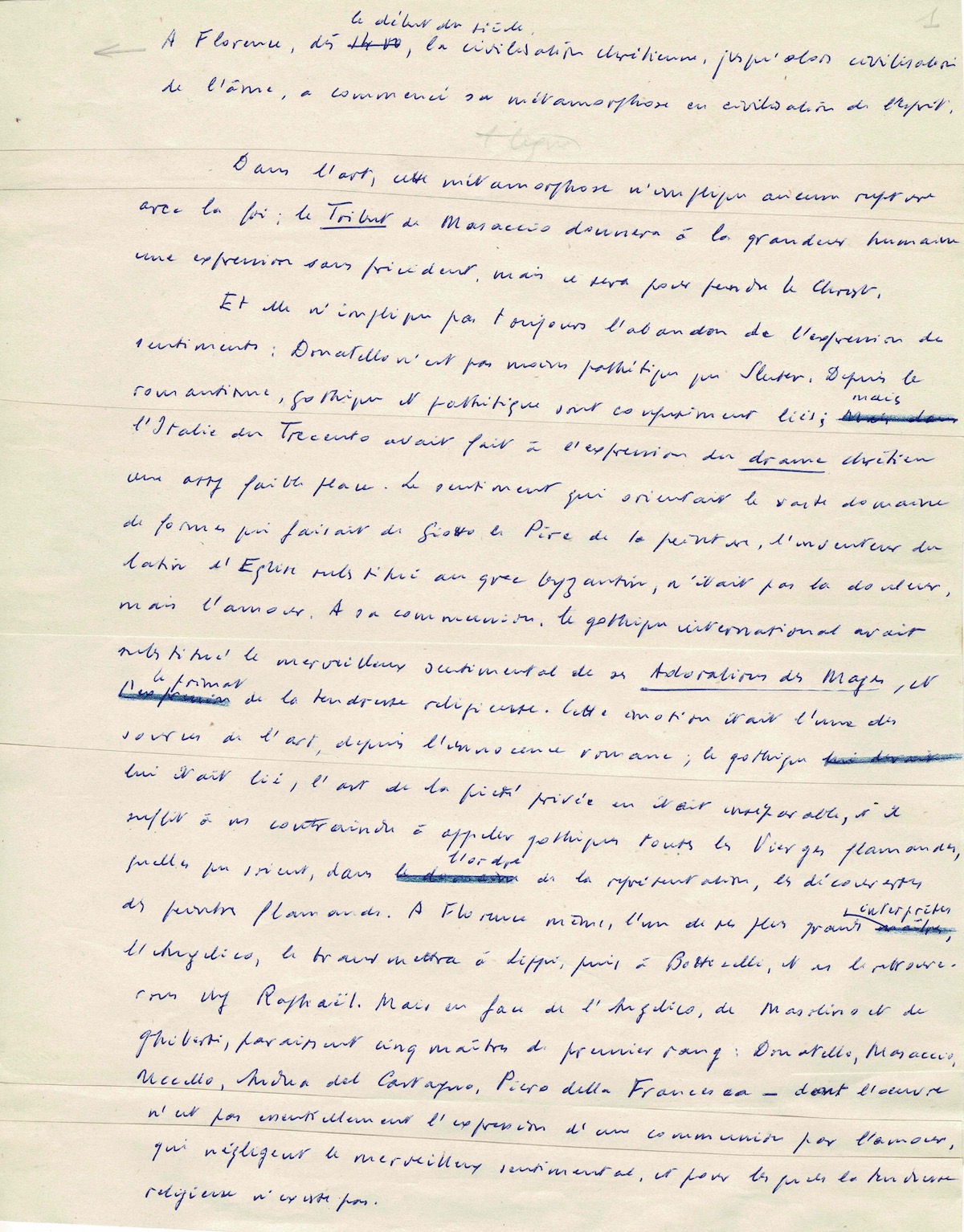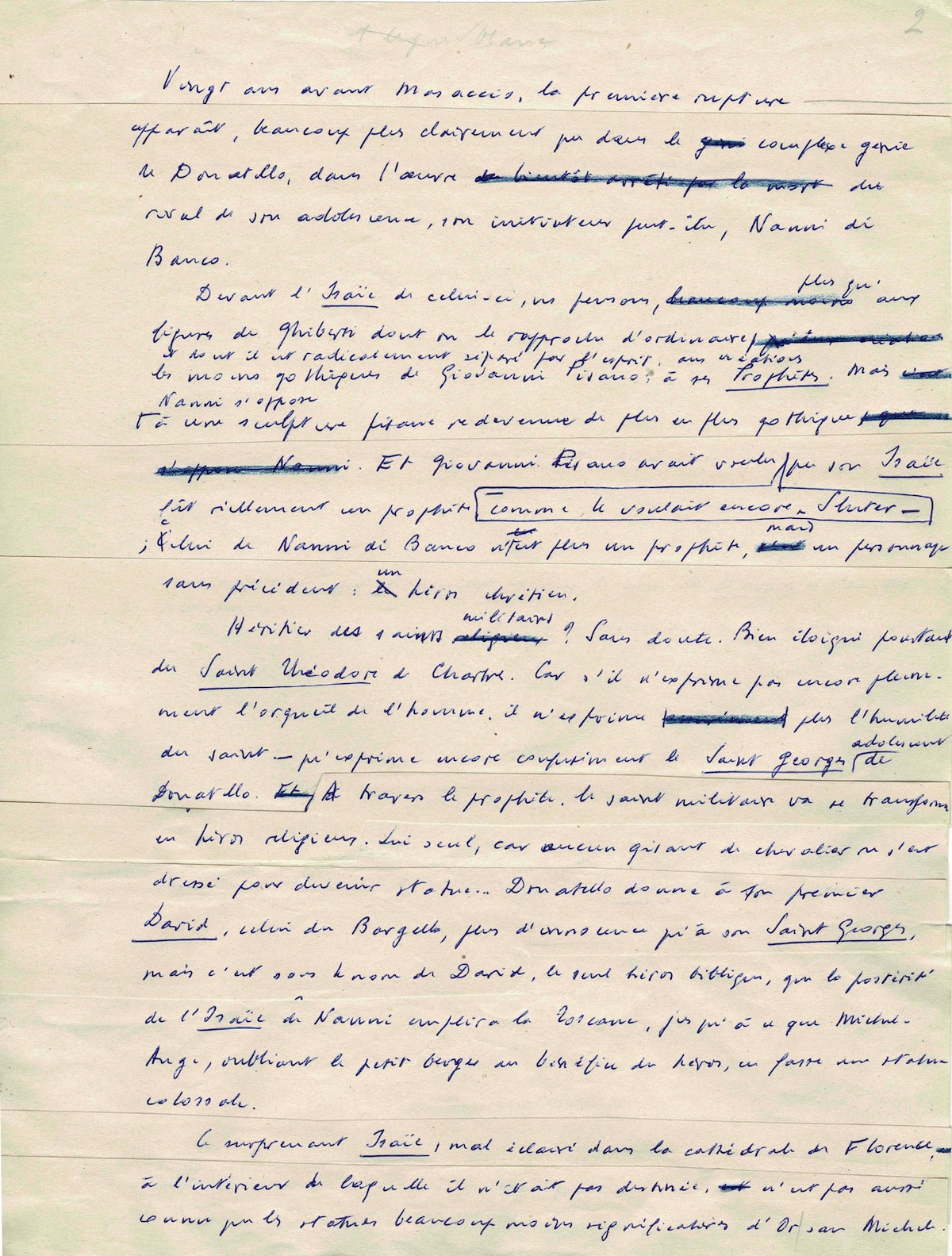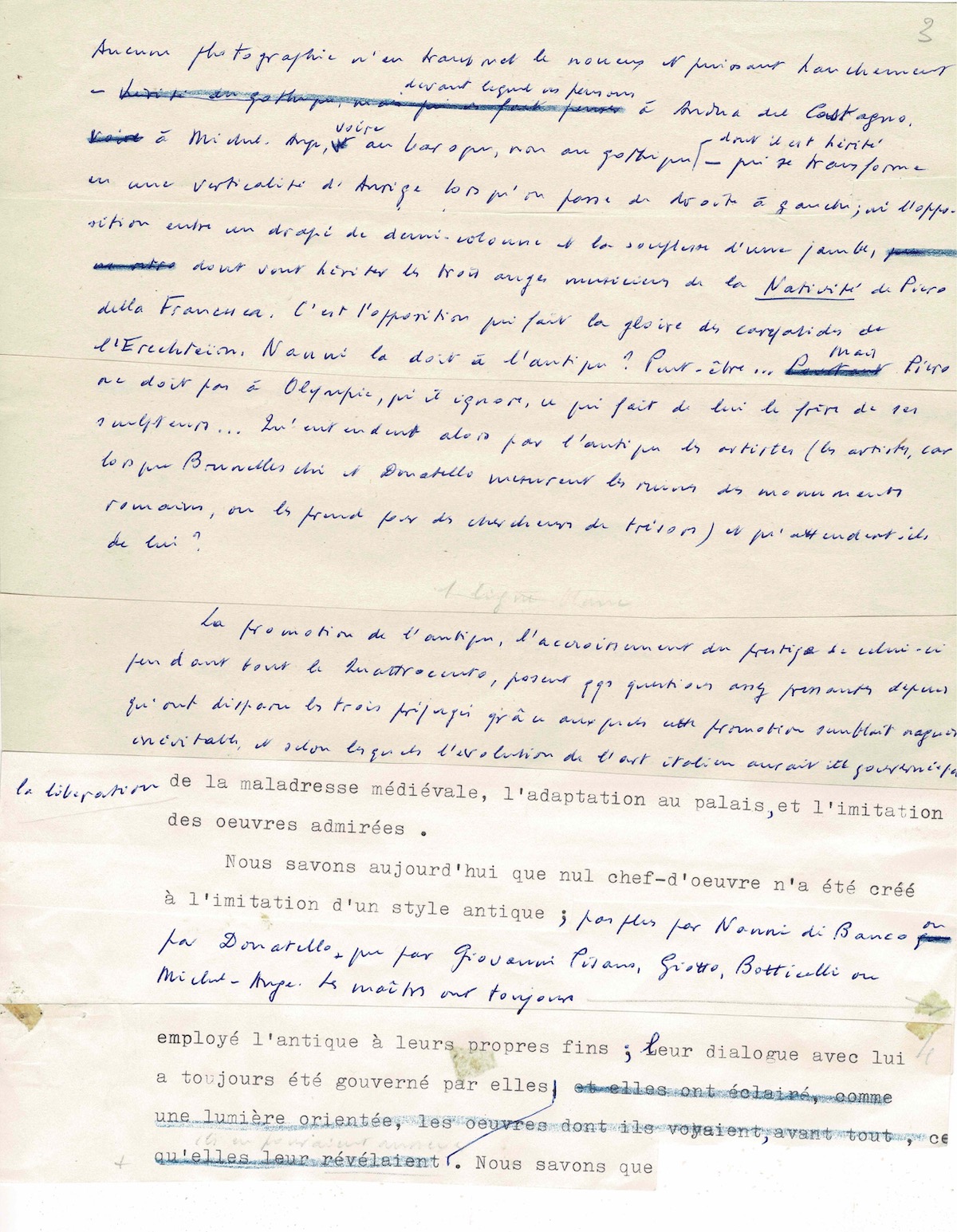André MALRAUX (1901.1976)
Autograph manuscript – The beginning of the century.
Three pages in-4° with cutouts and montages.
A few lines typed and corrected.
Slnd.
Remarkable working manuscript relating to the Italian Renaissance. Malraux puts into perspective the creations of Giotto, Michelangelo, Raphael, Donatello, Botticelli, Masaccio, etc. by analyzing their influences and ruptures regarding the Christian faith.
________________________________________________________________
“ In Florence, from 1400, Christian civilization, until then a civilization of the soul, began its metamorphosis into a civilization of the spirit. In art, this metamorphosis does not imply any break with faith: Masaccio's Tribute [ The Payment of Tribute , fresco by Masaccio] will give human greatness an unprecedented expression, but it will be to paint Christ.
And it does not always imply abandoning the expression of feelings: Donatello is no less pathetic than Sluter. Since romanticism, gothic and pathos have been confusedly linked ; but Italy of the trecento had given relatively little place to the expression of Christian drama The feeling which guided the vast domain of form which made Giotto the father of painting, the inventor of Church Latin replacing Byzantine Greek, was not pain, but love. For its communion, international Gothic had substituted the marvelous sentimentality of its Adoration of the Magi , and the format of religious tenderness. This emotion was one of the sacred in art, since Romanesque innocence; the Gothic was linked to it, the art of private piety was inseparable from it, and it is enough to force us to call all Flemish virgins Gothic, whatever, in the order of representation, the discoveries of Flemish painters.
In Florence itself, one of its greatest interpreters, Angelico [Fra Angelico], transmitted it to Lippi, then to Botticelli, and we will find it again in Raphael. But opposite the Angelico, Masolino and Ghiberti, [Masolino da Panicale and Lorenzo Ghiberti] appear five masters of the first rank: Donatello, Masaccio, Uccello, Andrea del Cartagno, Pierro della Francesca – whose work is not not essentially the expression of a communion through love, which neglect the sentimental marvelous, and for which religious tenderness does not exist.
Twenty years before Masaccio, the first break appears, much more clearly than in the complex genius of Donatello, in the work of the rival of his adolescence, his initiator perhaps, Nanni di Banco. Faced with the latter's Isaiah, we think, more than of the lines of Ghiberti to which he is usually compared, and from which he is radically separated in spirit, of the less gothic creations of Giovanni Pisano in his Prophets . But Nanni is opposed to a Pisan sculpture that has become increasingly Gothic again. And Giovanni Pisano had wanted, as Sluter still wanted, that his Isaiah was really a prophet; that of Nanni di Banco is no longer a prophet but an unprecedented character: a Christian hero.
Heir to the military saints? Without a doubt. Yet far removed from Saint Theodore of Chartres. Because if it does not yet fully express the pride of man, it no longer expresses the humility of the saint – which is still confusedly expressed by Saint George . Through the prophet, the military saint will be transformed into a religious hero. Him alone, because no knight's recumbent figure has risen to become a statue. Donatello gives his first David , that of Bargello, more assurance than his Saint George , but it is under the name of David, the only biblical hero, that the posterity of Isaiah will fill Tuscany, until Michelangelo, forgetting little George for the benefit of the hero, made a colossal statue of him. […]
The promotion of antiquity, the increase in its prestige throughout the quattrocento, poses some rather pressing questions since the three prejudices thanks to which this promotion once seemed inevitable, and according to which the evolution of Italian art would have been governed by liberation from medieval awkwardness […]
We know today that no masterpiece was created in imitation of an ancient style; no more by Nanni di Banco or by Donatello than by Giovanni Pisano, Giotto, Botticelli or Michelangelo ..."



